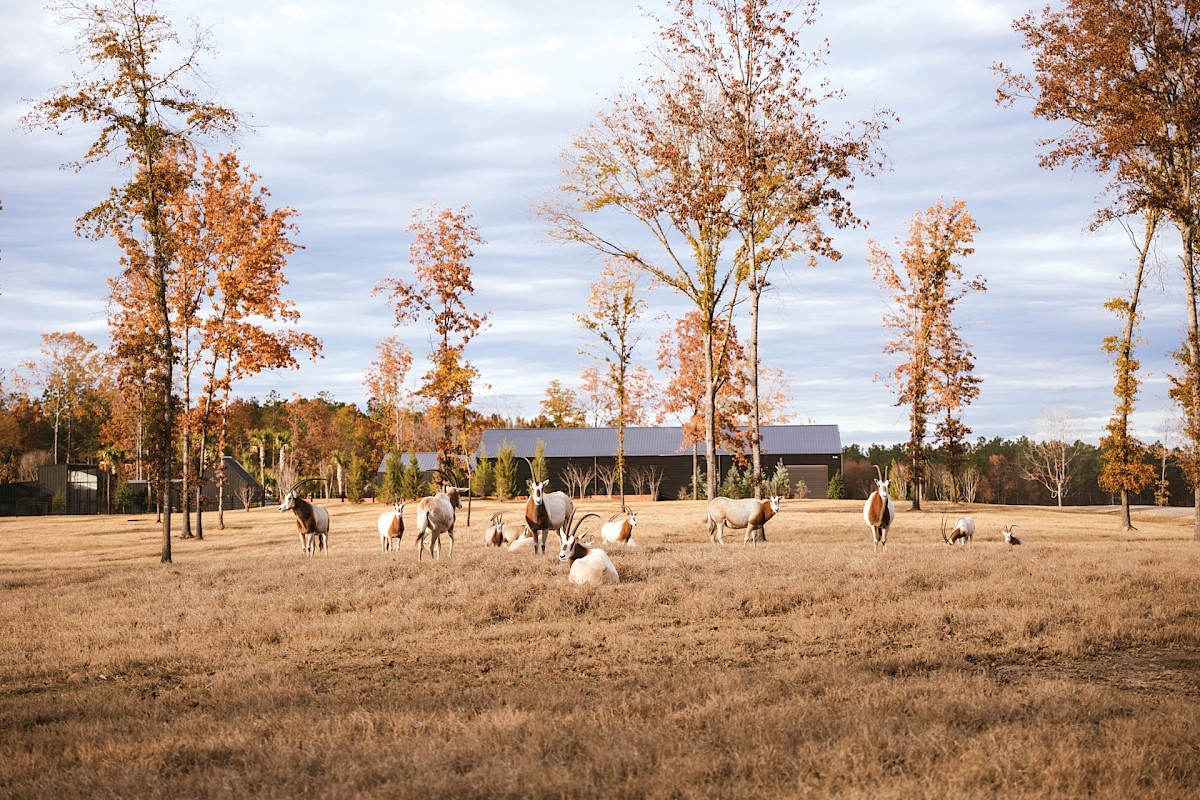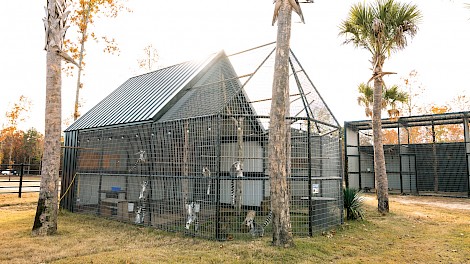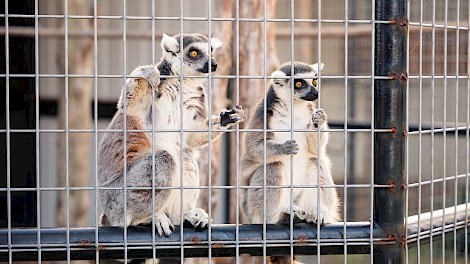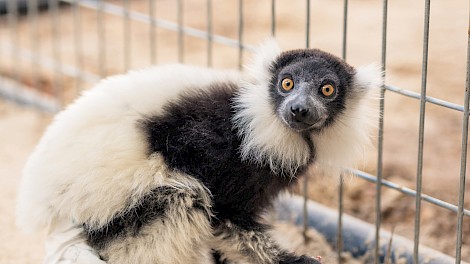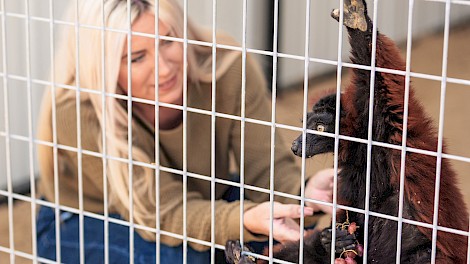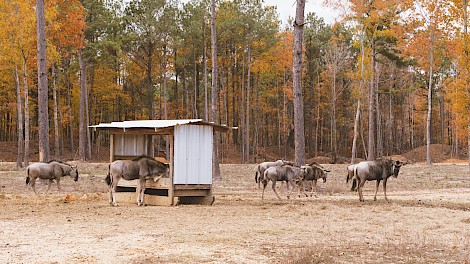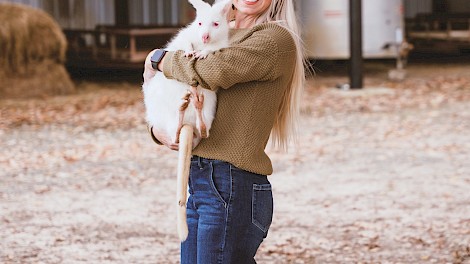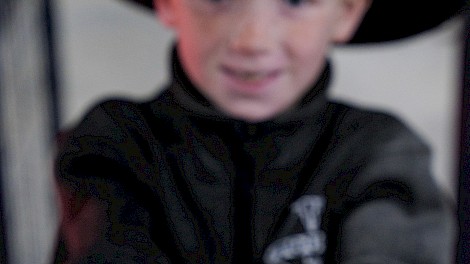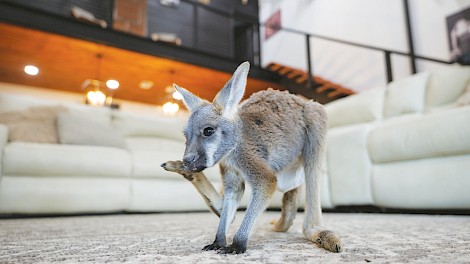Where the Wild Things Are
Many in Northeast Texas and Southwest Arkansas consider themselves animal lovers, but when you move beyond the realm of dogs, cats, and the occasional bird, you step beyond the day-to-day experiences of most in this area. It is hard to believe you are still in Bowie County when entering the property of Tara and Brian Whelchel in Redwater, Texas. The electric gate slowly opens revealing the beautiful hidden habitat of a multitude of exotic animals that somehow seem to be exactly where they were always meant to be, surrounding the Whelchel family’s newly built home. The views are beautiful everywhere you look, and with each turn of the eye, a fascinating creature captures your attention.
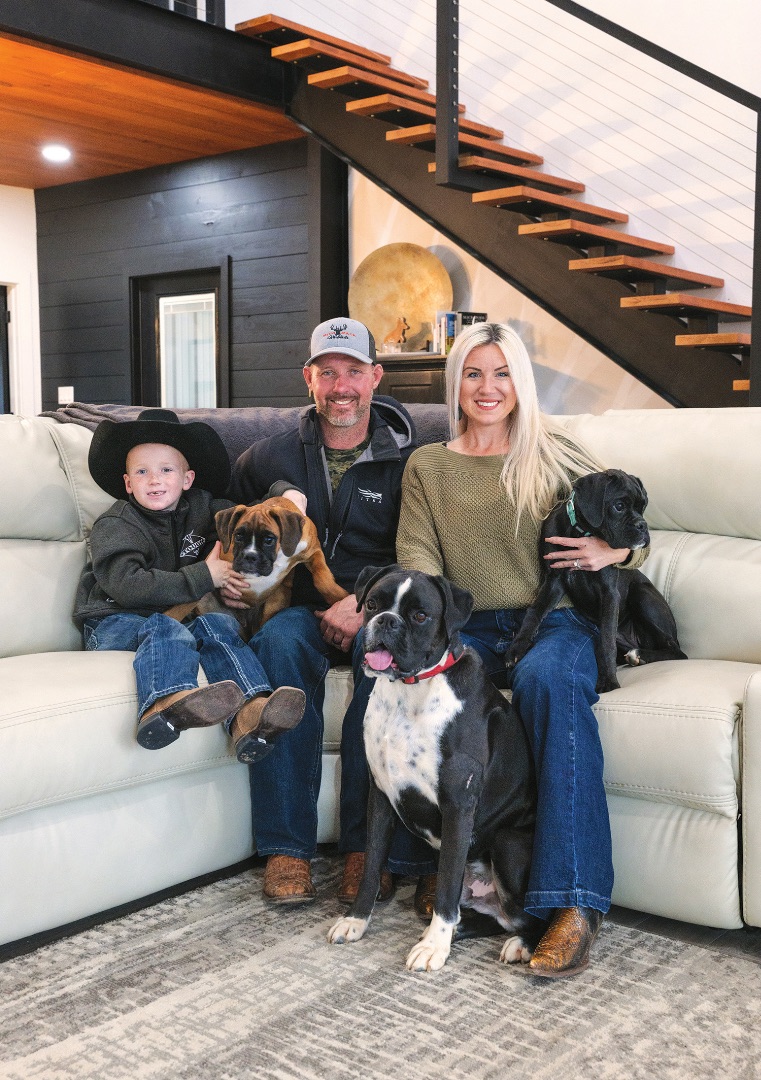
Introduce us to your family.
We are the Whelchels. Brian is 43, I am Tara, and I am 34. We have one son, Maxus, who is seven and one adult daughter, Jordan who is 22. Jordan has one son, our grandson Kylen, who is one. We own Brian Whelchel Construction, where he builds metal buildings and farm and ranch fencing. Maxus attends Redwater Elementary and is in first grade. I stay home and take care of things around the ranch.
List all the animals you have on your property and their native homes.
Red Kangaroo (Australia), Bennett’s Wallaby (Australia), Black and White Ruffed Lemur (Madagascar), Red Ruffed Lemur (Madagascar), Ring-tailed Lemur (Madagascar), White Bearded Wildebeest (Africa), Addax (Africa), Blackbuck (India), Alpacas (South America), and African Spurred Tortoise “Sulcata” (Africa).
What inspired you to turn your home into a place full of exotic animals? How long have you been doing it?
Brian has actually dealt in buying and selling exotics for many years. We have always known we eventually wanted our own place to raise our animals. We got the chance to purchase property that has been in Brian’s family for many years. We built, moved, and started buying animals at the end of 2020. We grew very quickly, and we continue to do so. A lot has happened in the past two years.
How have you learned about these animals—their care and their needs?
I do a ton of research and reading. I have met a lot of great people through Brian who also raise exotics. They have been a wealth of knowledge. Brian already knows so much about the hoofstock, but there was a lot to learn about kangaroos and lemurs. Everyone requires certain needs to be met, and husbandry is very important in the care of these animals. I learn new things every day.
Are there special licenses required to own and raise exotic animals?
Yes, to breed and sell them, you need a USDA license, which we have. To own as a pet only, there is no license needed. Some animals, like the lemurs, are critically endangered and cannot be sold across state lines. Being licensed and knowing these things is very important.
How did you find a veterinarian who is knowledgeable about the animal species you have?
We actually work with a couple of vets. We have one vet who comes here occasionally for routine checks, and he is always a phone call away. I have a vet I can take the kangaroos and lemurs to if we need to be seen that day. I am actually now able to do fecal checks on my own, and that’s a pretty big deal to me.
Who are your customers? Who buys kangaroo and lemur and the other animals you raise? And for what purpose?
Our customers consist of private owners, other breeders, drive-through parks, educational programs, as well as other ranches like ours.
Where do you purchase the right food for the animals since they are not native to this area?
For our hoofstock, we order a custom-made pellet feed. The kangaroos and lemurs get a species-specific kibble that I order through Miller Bowie Supply. The lemurs also get fruits and veggies daily. Brian always jokes about how I make them fancy salads.
How does our Texas climate and landscape compare to their natural environments?
During the warmer months, everyone is great. All of our animals naturally come from a warmer climate. During the winters, we feed them extra, and we put out a ton of bedding hay, and they have shelters. The lemurs all have heaters in insulated boxes and rooms. During the really low temps, the kangaroos also get a heater, and we go check everyone multiple times a night. I don’t care for the winter months.
Do you have a favorite animal or type of animal on your property? If so, what makes them special?
The lemurs are my favorite; I love how interactive they are. They are my babies. Brian likes the hoofstock, especially the addax. We all love the kangaroos. When we have babies, they hop around the house in diapers and sleep in bags hanging up. They are really sweet. A few of the lemurs also come in and wear diapers and hang out for a while. I bottle feed all of our kangaroos as babies.
What are your plans for the future? Do you have plans to expand or add other species of animals?
We are always looking to add more to what we have and to adding other species. We are frequently asked about opening to the public, but that isn’t something we are interested in. I have thought about maybe doing some educational things—maybe at local schools.
What roles do each of your family members play in the care of these animals?
Brian and I are a team around here. There is a lot to do: feeding daily, cleaning enclosures, and just checking on everyone’s well-being daily. There’s always something to be done around here.

